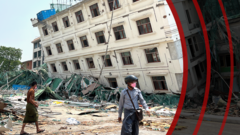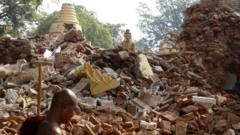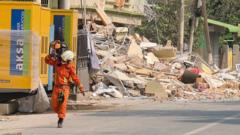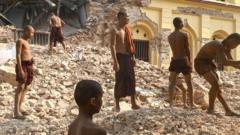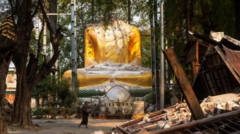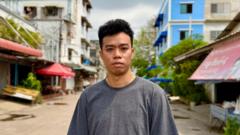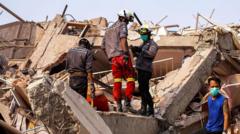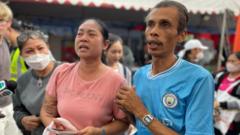This article recounts a personal narrative from a survivor who was aboard a ferry in the Andaman and Nicobar Islands when a catastrophic earthquake triggered a tsunami on December 26, 2004. While fortunate to escape directly, the survivor reflects on the widespread devastation and enduring memories of the tragedy that claimed thousands of lives across multiple nations.**
Reflections on the 2004 Tsunami: A Survivor's Close Call in the Andaman and Nicobar Islands**
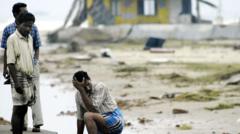
Reflections on the 2004 Tsunami: A Survivor's Close Call in the Andaman and Nicobar Islands**
A vivid recollection of a survivor's experience during the catastrophic 2004 tsunami, reflecting on the devastation it caused in the Andaman and Nicobar Islands and its lasting impact on the region.**
On December 26, 2004, I found myself aboard a ferry en route to Havelock Island in the Andaman and Nicobar archipelago, blissfully unaware that a looming disaster was about to unfold. Having arrived in Port Blair on Christmas Eve, I was eager to explore the region known for its pristine beaches, particularly Radhanagar beach, recently recognized as "Asia's Best Beach" by Time magazine.
As we departed from the jetty at Phoenix Bay, a sudden jolt rocked the boat. Looking toward the harbor, I witnessed a horrific scene: the nearby jetty collapsed into the sea, followed by a watchtower and an electric pole. Thankfully, the jetty was unoccupied, and no lives were lost at that moment. The crew informed us that an earthquake had struck, but I had yet to comprehend the magnitude of that 9.1 quake—the third most powerful recorded worldwide and the deadliest in Asia.
The tremor, originating off the coast of northwest Sumatra, unleashed a destructive tsunami that ultimately claimed the lives of approximately 228,000 people across a dozen countries, significantly affecting Indonesia, Sri Lanka, India, the Maldives, and Thailand. The Andaman and Nicobar Islands, situated just about 100 kilometers north of the earthquake's epicenter, were quickly engulfed by devastating waves, leaving extensive destruction and a bittersweet estimate of 1,310 confirmed deaths among the local population.
While aboard the boat, we were cutoff from immediate news and unaware of the destruction surrounding us. Our mobile devices were non-functional at sea, and we slowly gathered fragmented reports from the crew about damage elsewhere—Sri Lanka and Thailand had been severely impacted, but the fate of the Andaman and Nicobar Islands remained unclear.
We learned that nearly 94% of regional docks were damaged, including the one at Havelock, and we had to return to Port Blair. Hours of rough seas intensified the anxiety among many passengers, who, like me, had anticipated a sun-soaked holiday. Upon returning, the devastation was evident: buildings had crumbled, boats lay overturned in the streets, and the landscape bore deep scars from the tsunami's force.
I encountered a traumatized young girl, recounting how her house had been submerged in water—narrowly avoiding drowning. The stories of loss were steeped in profound grief. One woman shared the story of losing every possession she had worked a lifetime to acquire in mere moments.
In the weeks that followed, I became absorbed in reporting on this disaster's aftermath. The Andaman and Nicobar Islands had never experienced a tsunami of such magnitude before, and the challenge of delivering aid was immense due to damaged infrastructure. As saltwater contaminated fresh water supplies and devastated farmland, the Indian military mobilized significant resources for relief efforts.
Survivors were transported to makeshift shelters in Port Blair, recounting their tales of survival against the backdrop of grief. One woman, having lost her home, spoke of having waited two harrowing days for help, surviving with her newborn baby. During this time, Port Blair faced recurrent aftershocks, inciting fears of further tsunami events.
Military operations extended to other islands, including Car Nicobar, where I witnessed firsthand the scale of the devastation. The Indian air force base was razed, resulting in numerous casualties, including many personnel. Amidst the ruins, tales of families torn apart by the ocean's fury underscored the disaster's human toll.
Even two decades later, I often reflect on that fateful day aboard the ferry. What if the tremors had struck just a few minutes earlier, or worse, if I had been waiting on the jetty? My life was spared, yet thousands were lost, leaving behind memories that echo in the hearts of survivors and a reminder of nature's unforgiving power.

